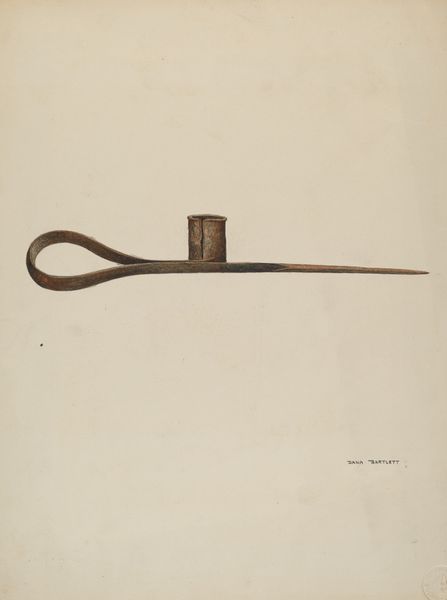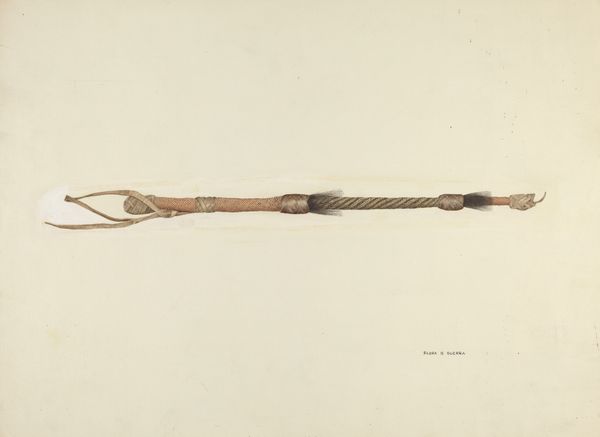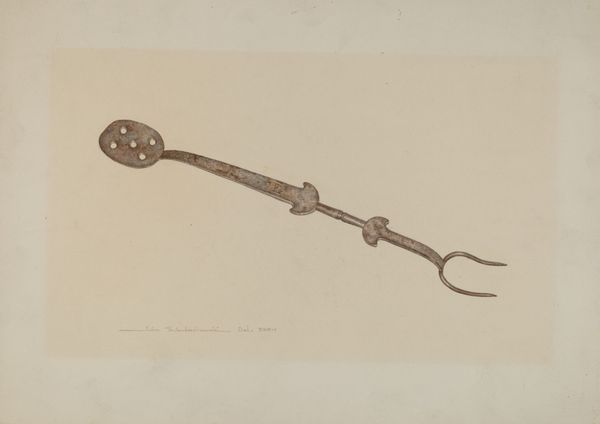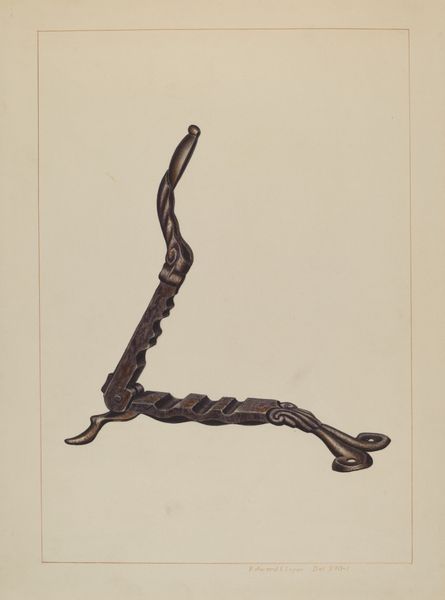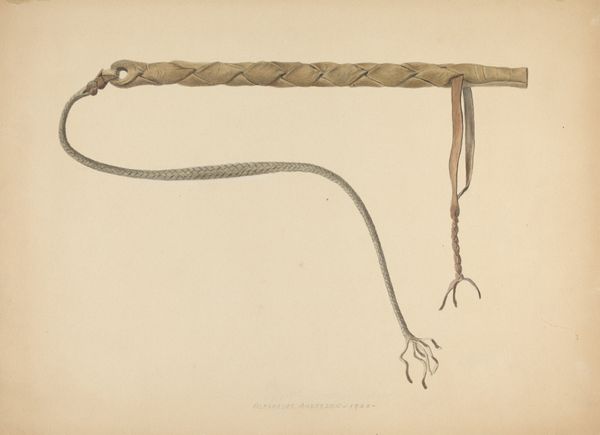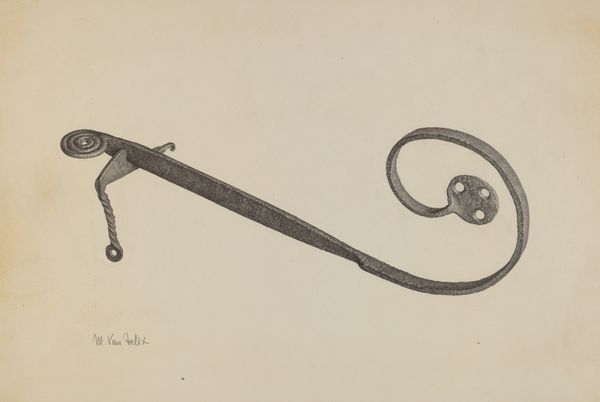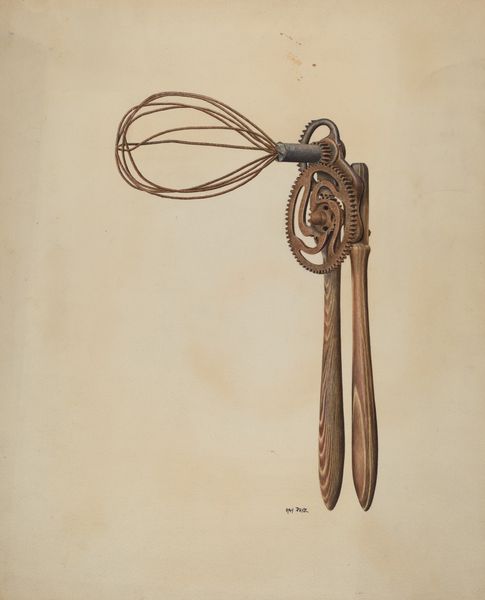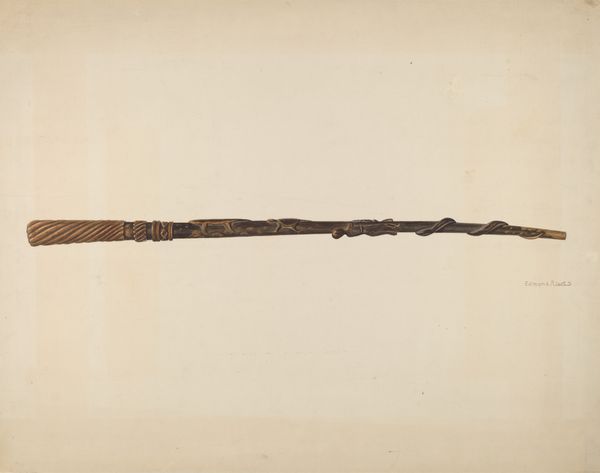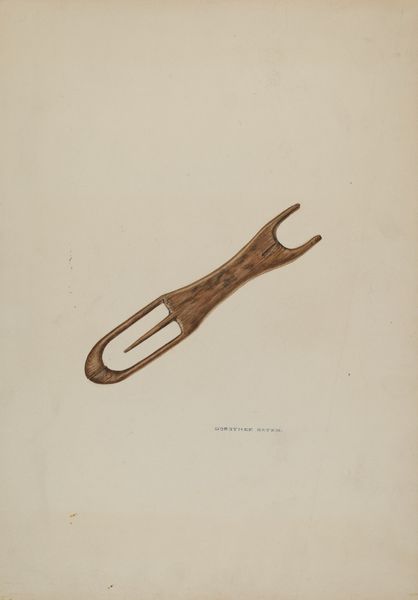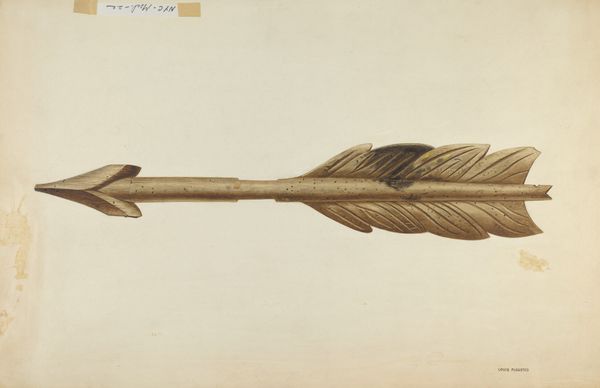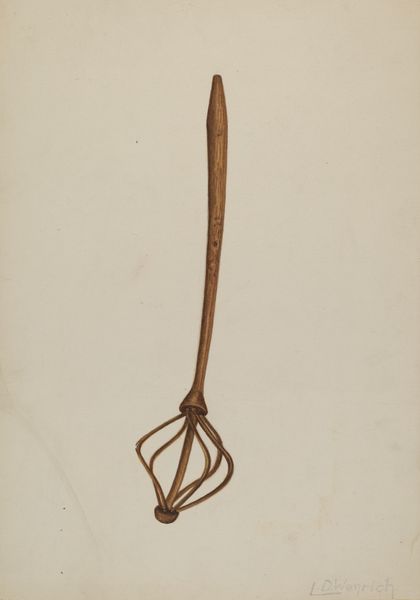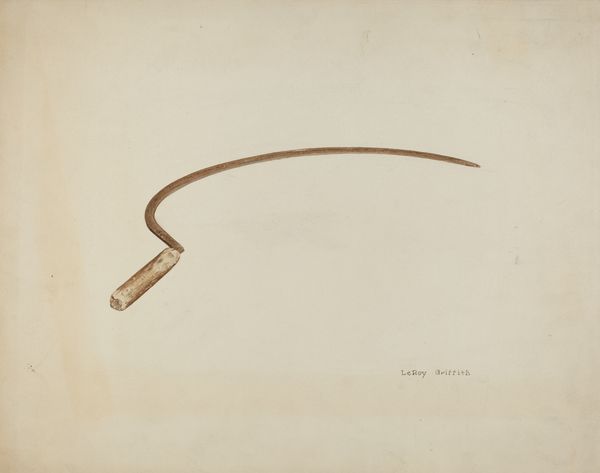
drawing, watercolor
#
drawing
#
watercolor
#
watercolour illustration
Dimensions: overall: 24.9 x 35.6 cm (9 13/16 x 14 in.)
Copyright: National Gallery of Art: CC0 1.0
Curator: Looking at "Horse Hobble," a watercolor drawing completed around 1939 by Mary Hansen, what strikes you most immediately? Editor: Its stark simplicity. There is a quality of attenuation; how a common thing, rope or twine, transforms via delicate linework into a kind of elegiac specimen when isolated in this pale field of watercolor. Curator: Hansen was, for a time, part of the Federal Art Project. Does this work resonate with any themes related to the American worker or rural life during the Depression era? Editor: In many respects, yes. It suggests the everyday realities and dependencies. Hobbles restrict a horse’s movement; here, represented simply without any judgment—though such constraints carry metaphoric implications of limited mobility relevant to laborers of the period. Curator: Indeed. This project often tasked artists to document such aspects of life and labor, perhaps instilling even mundane items like these with added layers of meaning related to hardship or resourcefulness of American people in hard times. How is this accomplished visually here? Editor: It is achieved mainly via its subdued tonal range and a restricted palette, heightening visual tension between restraint and resource. Also notice, please, that light models the planes delicately; the subtle twist reveals the texture of rope almost palpably within its drawn dimension. Curator: Certainly a beautiful consideration! The image has an indexical quality because it conveys so well both texture and tool through an exacting hand; do we agree these subtleties elevate an object, which, after all, just is quite simply the tether for work animals into something moving nonetheless? Editor: Absolutely. Here its form carries echoes well beyond, into social significance too by reminding us that art objects may carry silent yet strong associations capable transforming any humble tool into compelling testimony regarding constraints imposed upon populations. Thank you. Curator: Thank you as well. These works often encapsulate much complexity just beneath apparent minimalism — it gives an interesting way to look into difficult historical contexts surrounding its formation too and to reconsider objects familiar throughout the everyday again, transformed entirely due care art brings out them too though brief exchange as shared here!
Comments
No comments
Be the first to comment and join the conversation on the ultimate creative platform.
